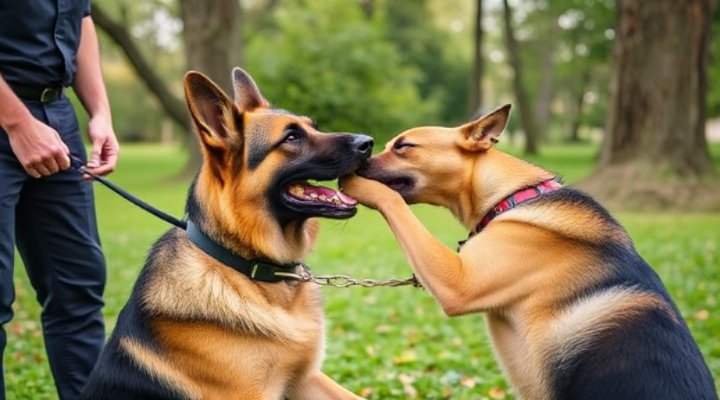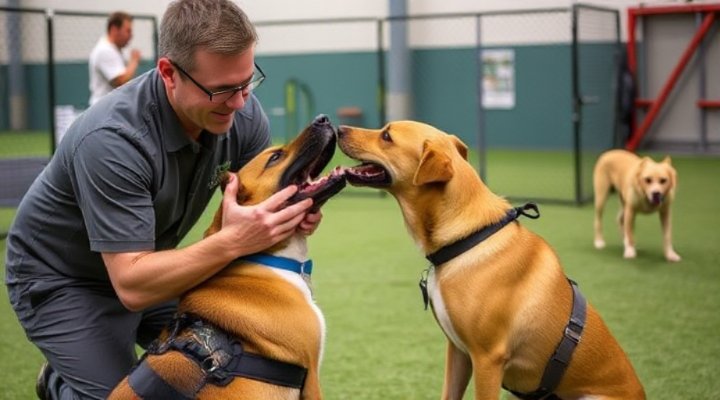Bite training for dogs is not just about stopping unwanted behavior; it’s about teaching your furry friend how to interact safely with the world around them. Whether you’re dealing with a playful puppy or an adult dog, understanding the fundamentals of bite inhibition can make a world of difference in your pet’s behavior and your peace of mind.
Why Bite Training for Dogs is Essential
Dogs naturally use their mouths to explore the world, much like humans use their hands. However, without proper guidance, this behavior can lead to painful nips or even dangerous bites. Bite training for dogs helps them understand the difference between gentle mouthing and unacceptable biting. This is especially important for puppies, as they learn bite inhibition from their littermates and mother. If they don’t, it’s up to you to teach them.

Understanding Puppy Bite Inhibition
Puppies learn bite inhibition through play with their siblings. When one puppy bites too hard, the other will yelp and stop playing. This teaches the biter that hard bites mean fun stops. You can replicate this at home by letting out a high-pitched ‘ouch!’ when your puppy bites too hard, then withdrawing attention for a short time. Consistency is key here. For more tips on puppy training, check out our guide on Obedience Classes for Puppies.
Step-by-Step Bite Training Techniques
1. Start Early: Begin bite training as soon as you bring your puppy home. The younger they are, the more receptive they’ll be to learning.
2. Use Positive Reinforcement: Reward gentle behavior with treats and praise. This reinforces that soft mouthing is good, while hard bites are not.
3. Provide Appropriate Chew Toys: Redirect biting behavior to suitable toys. This teaches your dog what is acceptable to chew on.
4. Be Consistent: Everyone in the household should respond the same way to biting behavior to avoid confusing your dog.

Bite Training for Adult Dogs
While it’s easier to teach bite inhibition to puppies, adult dogs can learn too. The process might take longer and require more patience, but it’s absolutely possible. Start by teaching your dog the ‘leave it’ command, which can be incredibly useful in managing biting behavior. For dogs with more severe biting issues, consider consulting a professional trainer. Our article on Dog Trainer for Aggressive Dogs offers valuable insights into finding the right help.
Common Mistakes to Avoid
– Punishing the Dog: Physical punishment can make biting worse by increasing fear and anxiety.
– Playing Rough: Games like tug-of-war can encourage biting if not properly managed.
– Inconsistency: Mixed signals about what’s acceptable will confuse your dog and slow progress.

The Role of Socialization in Bite Training
Proper socialization is crucial for bite training. Dogs that are well-socialized from a young age are less likely to develop aggressive biting behaviors. Expose your puppy to various people, animals, and environments in a controlled, positive way. The American Veterinary Medical Association provides excellent resources on dog bite prevention and socialization.
When to Seek Professional Help
If your dog’s biting is accompanied by aggression, fear, or anxiety, it’s time to consult a professional. Persistent biting that causes injury or seems out of control requires expert intervention. Don’t hesitate to reach out to a certified dog behaviorist or trainer who specializes in bite inhibition.

Maintaining Good Bite Habits
Once your dog has learned bite inhibition, it’s important to maintain these good habits. Continue to reinforce gentle behavior with praise and rewards. Regular play sessions that encourage soft mouthing will help keep the training fresh in your dog’s mind. Remember, bite training for dogs is an ongoing process that strengthens the bond between you and your pet.
For more information on related training topics, explore our articles on Dog Pulling on Leash and Potty Training a Dog.
Related Keywords: dog bite training, how to stop dog biting, puppy bite inhibition, dog behavior training, dog socialization, teaching dogs not to bite, gentle mouthing techniques

